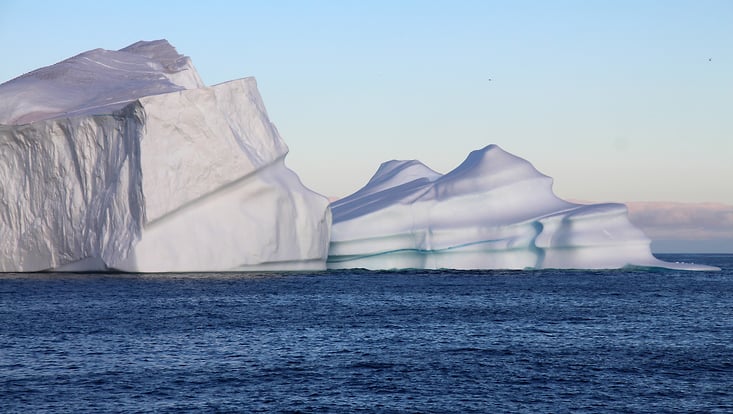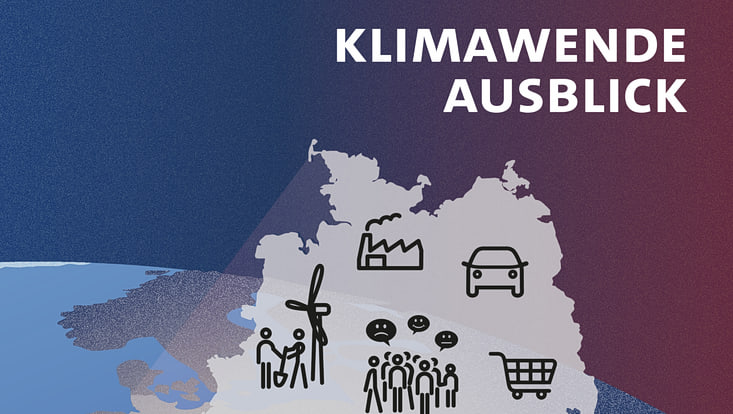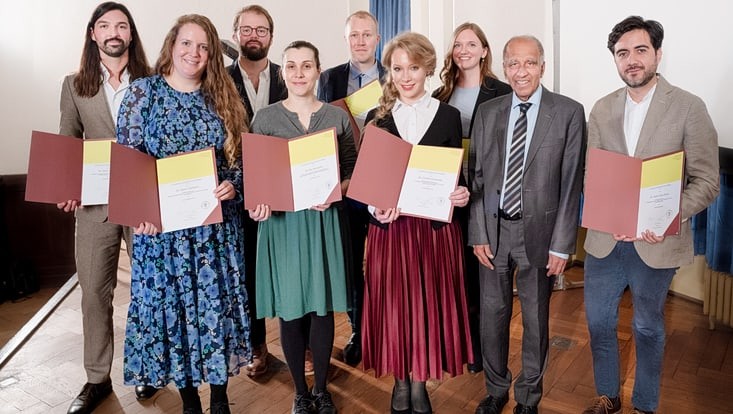and Society (CLICCS)
New study in ScienceBy 2100: An Arctic we’ll hardly recognize
7 February 2025, by Stephanie Janssen

Photo: UniHH/CEN/T.Wasilewski
The Arctic will change dramatically. If all nations meet the climate targets they’ve agreed to, the global mean temperature will rise by 2.7 degrees by the year 2100. In a study just released in the journal Science, Prof. Julienne Stroeve from the National Snow and Ice Data Center (NSIDC) in Colorado, Prof. Dirk Notz from the University of Hamburg’s Cluster of Excellence CLICCS, and their team show how the sea ice will dwindle, Greenland’s land-based ice will melt, permafrost will thaw, and what the consequences will be.
“Our findings clearly show that humanity already has the power to wipe entire landscapes from the face of the earth,” says polar expert Dirk Notz. With a temperature rise of 2.7 degrees Celsius, the Arctic Ocean, today still covered with sea ice, would remain ice-free for months in summer – something unprecedented in modern human history. The last time the Arctic was ice-free for an extended period was roughly 130,000 years ago. Greenland’s melting glaciers alone would contribute 20 centimeters to global sea-level rise. On land, half of the permafrost would thaw, releasing additional CO2 and making the ground beneath houses, roads and bridges unstable.
“The Arctic is warming four times as fast as the rest of the planet,” says polar researcher Julienne Stroeve, who works at the NSIDC and at the University of Manitoba. “As a result, mean global warming of 2.7 degrees Celsius will produce particularly extreme effects in this region.”
It ´s not even the most extreme scenario
In their study, the experts combined climate-model-based simulations with observational data from satellites. Using this approach, they assessed the development of the Arctic sea ice, the Greenland Ice Sheet and permafrost from the preindustrial era to the present – a world roughly 1.5 degrees warmer – and for a scenario depicting a 2.7-degree increase by the year 2100.
The projected impacts of progressive warming on the ecosystem as a whole and the people living in it are dramatic. Arctic fish and plankton aren’t adapted to living in the warmer, brighter water, which means their stocks are likely to decline. Polar bears and certain species of seabird could die out, at least in some regions. The sea ice will no longer support vehicles, which means indigenous communities will lose hunting and transport routes. Rising sea levels will increase the risk of coastal erosion, flooding, and freshwater reservoirs being contaminated with saltwater.
“We’re not even looking at the most extreme scenario. 2.7 degrees of warming is what we’ll get if all countries meet their agreed-upon climate targets – which there’s no guarantee of,” says Notz. “We’re radically changing our planet and need to be aware of our own power and responsibility. The Arctic is only one example; in fact, the future of the entire planet is in our hands.”
Publication
Stroeve JC, Notz D, Dawson J, Schuur EAG, Dahl-Jensen D, Giesse C (2025): Disappearing landscapes: The Arctic at +2.7°C; Science, Vol 387, Issue 6734, pp. 616-621
Contact
Prof. Dirk Notz
University of Hamburg
Center for Earth System Research and Sustainability (CEN)
Cluster of Excellence “Climate, Climatic Change, and Society” (CLICCS)
Tel.: +49 40 42838-5337
E-Mail: dirk.notz@uni-hamburg.de
Stephanie Janssen
University of Hamburg
Center for Earth System Research and Sustainability (CEN)
Cluster of Excellence “Climate, Climatic Change, and Society” (CLICCS)
Presse and Outreach
Tel: +49 40 42838-7596
E-Mail: stephanie.janssen@uni-hamburg.de


